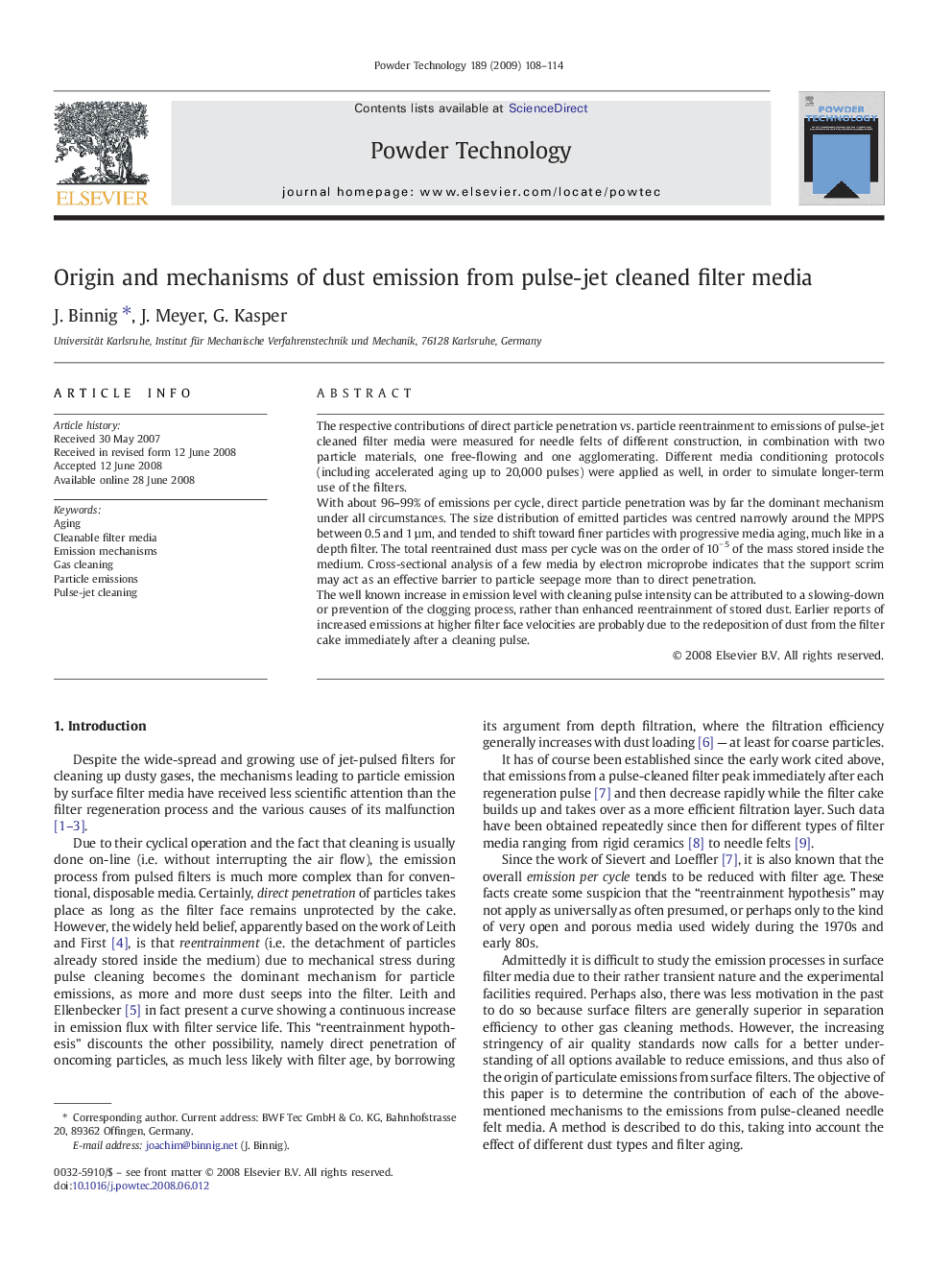| کد مقاله | کد نشریه | سال انتشار | مقاله انگلیسی | نسخه تمام متن |
|---|---|---|---|---|
| 238629 | 465765 | 2009 | 7 صفحه PDF | دانلود رایگان |

The respective contributions of direct particle penetration vs. particle reentrainment to emissions of pulse-jet cleaned filter media were measured for needle felts of different construction, in combination with two particle materials, one free-flowing and one agglomerating. Different media conditioning protocols (including accelerated aging up to 20,000 pulses) were applied as well, in order to simulate longer-term use of the filters.With about 96–99% of emissions per cycle, direct particle penetration was by far the dominant mechanism under all circumstances. The size distribution of emitted particles was centred narrowly around the MPPS between 0.5 and 1 µm, and tended to shift toward finer particles with progressive media aging, much like in a depth filter. The total reentrained dust mass per cycle was on the order of 10− 5 of the mass stored inside the medium. Cross-sectional analysis of a few media by electron microprobe indicates that the support scrim may act as an effective barrier to particle seepage more than to direct penetration.The well known increase in emission level with cleaning pulse intensity can be attributed to a slowing-down or prevention of the clogging process, rather than enhanced reentrainment of stored dust. Earlier reports of increased emissions at higher filter face velocities are probably due to the redeposition of dust from the filter cake immediately after a cleaning pulse.
The respective contributions of direct particle penetration and particle reentrainment to the emission of pulsed surface filter media were determined for 2 needle felts in different stages of accelerated aging up to 20,000 cycles, using a free-flowing and an agglomerating dust. Direct particle penetration was the dominant mechanism at all times, with more than 95% of total emission per cycle. Reentrainment rates were extremely low.Figure optionsDownload as PowerPoint slide
Journal: Powder Technology - Volume 189, Issue 1, 25 January 2009, Pages 108–114